Enhanced Antimicrobial Activity of Silver Sulfadiazine Cosmetotherapeutic Nanolotion for Burn Infections
Abstract
1. Introduction
2. Materials and Methods
2.1. Media, Chemicals, and Cell Lines
2.2. Formulation and Optimization of Blank Nanoemulsions
2.3. Formulation and Optimization of Drug-Loaded Nanoemulsions
2.4. Characterization and Evaluation of Nanoemulsions
2.4.1. Physical Appearance and Particle Size Analysis
2.4.2. Refractive Index Measurement
2.4.3. Encapsulation Efficiency Measurement
2.5. Formulation of Nanolotion
2.6. Characterization and Evaluation of Nanolotion
2.6.1. Physical Appearance and Particle Size Analysis
2.6.2. Fourier Transform Infrared Spectroscopy (FTIR)
2.6.3. Comparative Antimicrobial Activity of Nanolotion
2.6.4. In Vivo Skin Irritation Assay (Biocompatibility Analysis)
2.6.5. Stability Studies
2.7. Statistical Analysis
3. Results and Discussions
3.1. Formulation and Optimization of Nanoemulsions
3.2. Characterization and Evaluation of Blank, Drug-Loaded Nanoemulsion and Nanolotion
3.2.1. Physical Characterization and Particle Size Analysis of Blank, Drug-Loaded Nanoemulsion and Nanolotion
3.2.2. Refractive Index Measurement
3.2.3. Encapsulation Efficiency Measurement
3.2.4. Fourier Transform Infrared Spectroscopy
3.2.5. Comparative In Vitro Antibacterial Study
3.2.6. In Vitro Antifungal Study
3.2.7. In Vivo Skin Irritation Assay (Biocompatibility Analysis)
Stability Studies
4. Conclusions
Author Contributions
Funding
Institutional Review Board Statement
Informed Consent Statement
Data Availability Statement
Conflicts of Interest
References
- Souto, E.B.; Ribeiro, A.F.; Ferreira, M.I.; Teixeira, M.C.; Shimojo, A.A.; Soriano, J.L.; Naveros, B.C.; Durazzo, A.; Lucarini, M.; Souto, S.B. New nanotechnologies for the treatment and repair of skin burns infections. Int. J. Mol. Sci. 2020, 21, 393. [Google Scholar] [CrossRef] [PubMed]
- Koyro, K.I.; Bingoel, A.S.; Bucher, F.; Vogt, P.M. Burn Guidelines—An International Comparison. Eur. Burn. J. 2021, 2, 125–139. [Google Scholar] [CrossRef]
- Hu, X.; Sun, Z.; Li, F.; Jiang, C.; Yan, W.; Sun, Y. Burn-induced heterotopic ossification from incidence to therapy: Key signaling pathways underlying ectopic bone formation. Cell. Mol. Biol. Lett. 2021, 26, 1–13. [Google Scholar] [CrossRef] [PubMed]
- Oba, J.; Okabe, M.; Yoshida, T.; Soko, C.; Fathy, M.; Amano, K.; Kobashi, D.; Wakasugi, M.; Okudera, H. Hyperdry human amniotic membrane application as a wound dressing for a full-thickness skin excision after a third-degree burn injury. Burn. Trauma 2020, 8, tkaa014. [Google Scholar] [CrossRef]
- Barrett, L.W.; Fear, V.S.; Waithman, J.C.; Wood, F.M.; Fear, M.W. Understanding acute burn injury as a chronic disease. Burn. Trauma 2019, 7, s41038-019-0163-2. [Google Scholar] [CrossRef]
- Shao, W.; Liu, H.; Liu, X.; Wang, S.; Wu, J.; Zhang, R.; Min, H.; Huang, M. Development of silver sulfadiazine loaded bacterial cellulose/sodium alginate composite films with enhanced antibacterial property. Carbohydr. Polym. 2015, 132, 351–358. [Google Scholar] [CrossRef]
- de Sousa, J.K.T.; Haddad, J.P.A.; de Oliveira, A.C.; Vieira, C.D.; dos Santos, S.G. In vitro activity of antimicrobial-impregnated catheters against biofilms formed by KPC-producing Klebsiella pneumoniae. J. Appl. Microbiol. 2019, 127, 1018–1027. [Google Scholar] [CrossRef] [PubMed]
- Klifto, K.M.; Gurno, C.F.; Seal, S.M.; Hultman, C.S. Factors associated with mortality following burns complicated by necrotizing skin and soft tissue infections: A systematic review and meta-analysis of individual participant data. J. Burn. Care Res. 2021, 43, 163–188. [Google Scholar] [CrossRef]
- Nuutila, K.; Grolman, J.; Yang, L.; Broomhead, M.; Lipsitz, S.; Onderdonk, A.; Mooney, D.; Eriksson, E. Immediate treatment of burn wounds with high concentrations of topical antibiotics in an alginate hydrogel using a platform wound device. Adv. Wound Care 2020, 9, 48–60. [Google Scholar] [CrossRef]
- Bocchiotti, G.; Robotti, E. The use of a topical antibacterial agent (silver sulfadiazine) on soft-tissue wounds. Minerva Chir. 1990, 45, 677–681. [Google Scholar]
- Khattak, S.; Qin, X.-T.; Huang, L.-H.; Xie, Y.-Y.; Jia, S.-R.; Zhong, C. Preparation and characterization of antibacterial bacterial cellulose/chitosan hydrogels impregnated with silver sulfadiazine. Int. J. Biol. Macromol. 2021, 189, 483–493. [Google Scholar] [CrossRef]
- Heyneman, A.; Hoeksema, H.; Vandekerckhove, D.; Pirayesh, A.; Monstrey, S. The role of silver sulphadiazine in the conservative treatment of partial thickness burn wounds: A systematic review. Burns 2016, 42, 1377–1386. [Google Scholar] [CrossRef]
- Luan, J.; Wu, J.; Zheng, Y.; Song, W.; Wang, G.; Guo, J.; Ding, X. Impregnation of silver sulfadiazine into bacterial cellulose for antimicrobial and biocompatible wound dressing. Biomed. Mater. 2012, 7, 065006. [Google Scholar] [CrossRef]
- Oaks, R.J.; Cindass, R. Silver Sulfadiazine; StatPearls: Treasure Island, FL, USA, 2021. [Google Scholar]
- El-Feky, G.S.; Sharaf, S.S.; El Shafei, A.; Hegazy, A.A. Using chitosan nanoparticles as drug carriers for the development of a silver sulfadiazine wound dressing. Carbohydr. Polym. 2017, 158, 11–19. [Google Scholar] [CrossRef]
- Irshad, S.; Siddiqui, B.; ur Rehman, A.; Farooq, R.K.; Ahmed, N. Recent trends and development in targeted delivery of therapeutics through enzyme responsive intelligent nanoplatform. Int. J. Polym. Mater. Polym. Biomater. 2022, 71, 403–413. [Google Scholar] [CrossRef]
- Jahromi, M.A.M.; Zangabad, P.S.; Basri, S.M.M.; Zangabad, K.S.; Ghamarypour, A.; Aref, A.R.; Karimi, M.; Hamblin, M.R. Nanomedicine and advanced technologies for burns: Preventing infection and facilitating wound healing. Adv. Drug Deliv. Rev. 2018, 123, 33–64. [Google Scholar] [CrossRef] [PubMed]
- Siddiqui, B.; Al-Dossary, A.A.; Elaissari, A.; Ahmed, N. Exploiting recent trends for the synthesis and surface functionalization of mesoporous silica nanoparticles towards biomedical applications. Int. J. Pharm. X 2022, 4, 100116. [Google Scholar] [CrossRef] [PubMed]
- Chime, S.; Kenechukwu, F.; Attama, A. Nanoemulsions—Advances in formulation, characterization and applications in drug delivery. In Application of Nanotechnology in Drug Delivery; BoD–Books on Demand: Norderstedt, Germany, 2014; Volume 3. [Google Scholar]
- Naseema, A.; Kovooru, L.; Behera, A.K.; Kumar, K.P.; Srivastava, P. A critical review of synthesis procedures, applications and future potential of nanoemulsions. Adv. Colloid Interface Sci. 2020, 287, 102318. [Google Scholar]
- Menni, H.B.; Belarbi, M.; Menni, D.B.; Bendiab, H.; Kherraf, Y.; Ksouri, R.; Djebli, N.; Visioli, F. Anti-inflammatory activity of argan oil and its minor components. Int. J. Food Sci. Nutr. 2020, 71, 307–314. [Google Scholar] [CrossRef]
- Siddiqui, B.; Rehman, A.U.; Haq, I.-U.; Ahmad, N.M.; Ahmed, N. Development, optimisation, and evaluation of nanoencapsulated diacerein emulgel for potential use in osteoarthritis. J. Microencapsul. 2020, 37, 595–608. [Google Scholar] [CrossRef]
- Čoma, M.; Fröhlichová, L.; Urban, L.; Zajíček, R.; Urban, T.; Szabo, P.; Novák, Š.; Fetissov, V.; Dvořánková, B.; Smetana, K. Molecular changes underlying hypertrophic scarring following burns involve specific deregulations at all wound healing stages (Inflammation, proliferation and maturation). Int. J. Mol. Sci. 2021, 22, 897. [Google Scholar] [CrossRef] [PubMed]
- Shu, F.; Liu, H.; Lou, X.; Zhou, Z.; Zhao, Z.; Liu, Y.; Bai, X.; Luo, P.; Zheng, Y.; Xiao, S. Analysis of the excellent predictors of postburn hypertrophic scarring pain and neuropathic pain. Burns 2021, 48, 1425–1434. [Google Scholar] [CrossRef] [PubMed]
- Field, T.; Peck, M.; Hernandez-Reif, M.; Krugman, S.; Burman, I.; Ozment-Schenck, L. Postburn itching, pain, and psychological symptoms are reduced with massage therapy. J. Burn. Care Rehabil. 2000, 21, 189–193. [Google Scholar] [CrossRef]
- Vinaik, R.; Fish, J.; Jeschke, M.G. Burn Hypertrophic Scar in Pediatric Patients: Clinical Case. In Textbook on Scar Management; Springer: Berlin/Heidelberg, Germany, 2020; pp. 517–521. [Google Scholar]
- Nithianandam, P.; Das, S.; Park, Y.C. Effect of Surfactant–Keratin Hydrolysate Interactions on the Hydration Properties of a Stratum Corneum Substitute. Langmuir 2020, 36, 2543–2552. [Google Scholar] [CrossRef] [PubMed]
- Ragavan, M.L.; Das, N. Nanoencapsulation of Saccharomycopsis fibuligera VIT-MN04 using electrospinning technique for easy gastrointestinal transit. IET Nanobiotechnol. 2020, 14, 766–773. [Google Scholar] [CrossRef] [PubMed]
- Bhatia, D.; Mittal, A.; Malik, D.K. Antimicrobial potential and in vitro cytotoxicity study of polyvinyl pyrollidone-stabilised silver nanoparticles synthesised from Lysinibacillus boronitolerans. IET Nanobiotechnol. 2021, 15, 427–440. [Google Scholar] [CrossRef]
- Draize, J.H.J. Methods for the study of irritation and toxicity of substances applied topically to the skin and mucous membranes. J. Pharmacol. Exp. Ther. 1944, 82, 377–390. [Google Scholar]
- Dar, M.J.; Din, F.U.; Khan, G.M. Sodium stibogluconate loaded nano-deformable liposomes for topical treatment of leishmaniasis: Macrophage as a target cell. J. Drug Deliv. 2018, 25, 1595–1606. [Google Scholar] [CrossRef]
- Mahbubul, I.; Elcioglu, E.B.; Saidur, R.; Amalina, M. Optimization of ultrasonication period for better dispersion and stability of TiO2—water nanofluid. Ultrason. Sonochem. 2017, 37, 360–367. [Google Scholar] [CrossRef]
- Venkataraman, M.; Nagarsenker, M.J.A.P. Silver sulfadiazine nanosystems for burn therapy. AAPS PharmSciTech 2013, 14, 254–264. [Google Scholar] [CrossRef][Green Version]
- Morsi, N.M.; Abdelbary, G.A.; Ahmed, M.A. Silver sulfadiazine based cubosome hydrogels for topical treatment of burns: Development and in vitro/in vivo characterization. Eur. J. Pharm. Biopharm. 2014, 86, 178–189. [Google Scholar] [CrossRef] [PubMed]
- Felciya, S.J.G.; Devi, M.V.; Ramanathan, G.; Poornima, V.; Sivagnanam, U.T. Fabrication of polyhydroxy butyric acid–Gelatin blended nanofibrous matrix integrated with silver sulfadiazine as an alternate wound dressing for treating burns. Mater. Lett. 2021, 282, 128541. [Google Scholar] [CrossRef]
- Mehta, P.; Sharma, D.; Dashora, A.; Sahu, D.; Garg, R.; Agrawal, P.; Kapoor, D. Design, development and evaluation of lipid based topical formulations of silver sulfadiazine for treatment of burns and wounds. Innovare J. Life Sci. 2013, 1, 38–44. [Google Scholar]
- Khattak, S.; Qin, X.-T.; Wahid, F.; Huang, L.-H.; Xie, Y.-Y.; Jia, S.-R.; Zhong, C. Permeation of Silver Sulfadiazine Into TEMPO-Oxidized Bacterial Cellulose as an Antibacterial Agent. Front. Bioeng. Biotechnol. Adv. 2020, 8, 616467. [Google Scholar] [CrossRef] [PubMed]
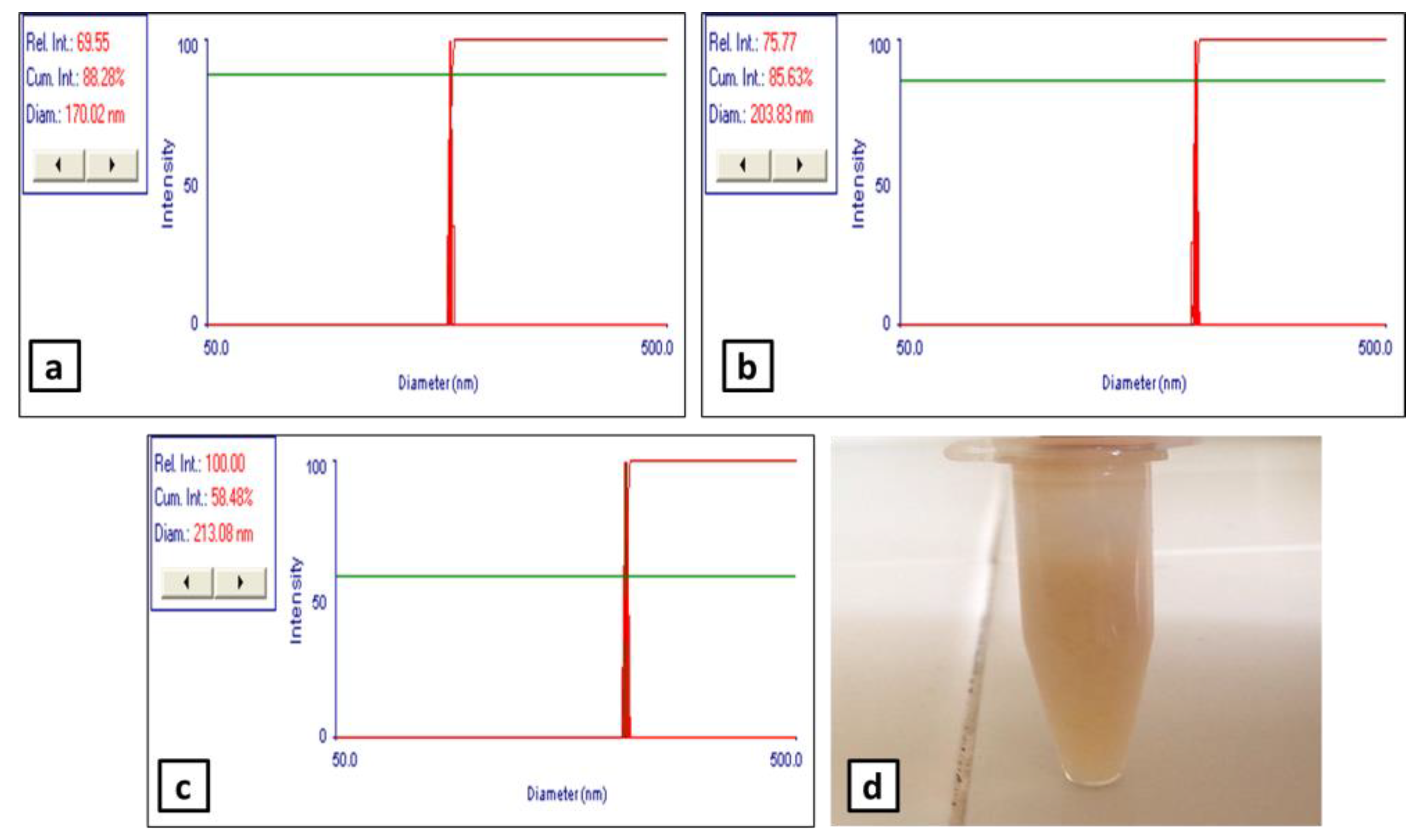
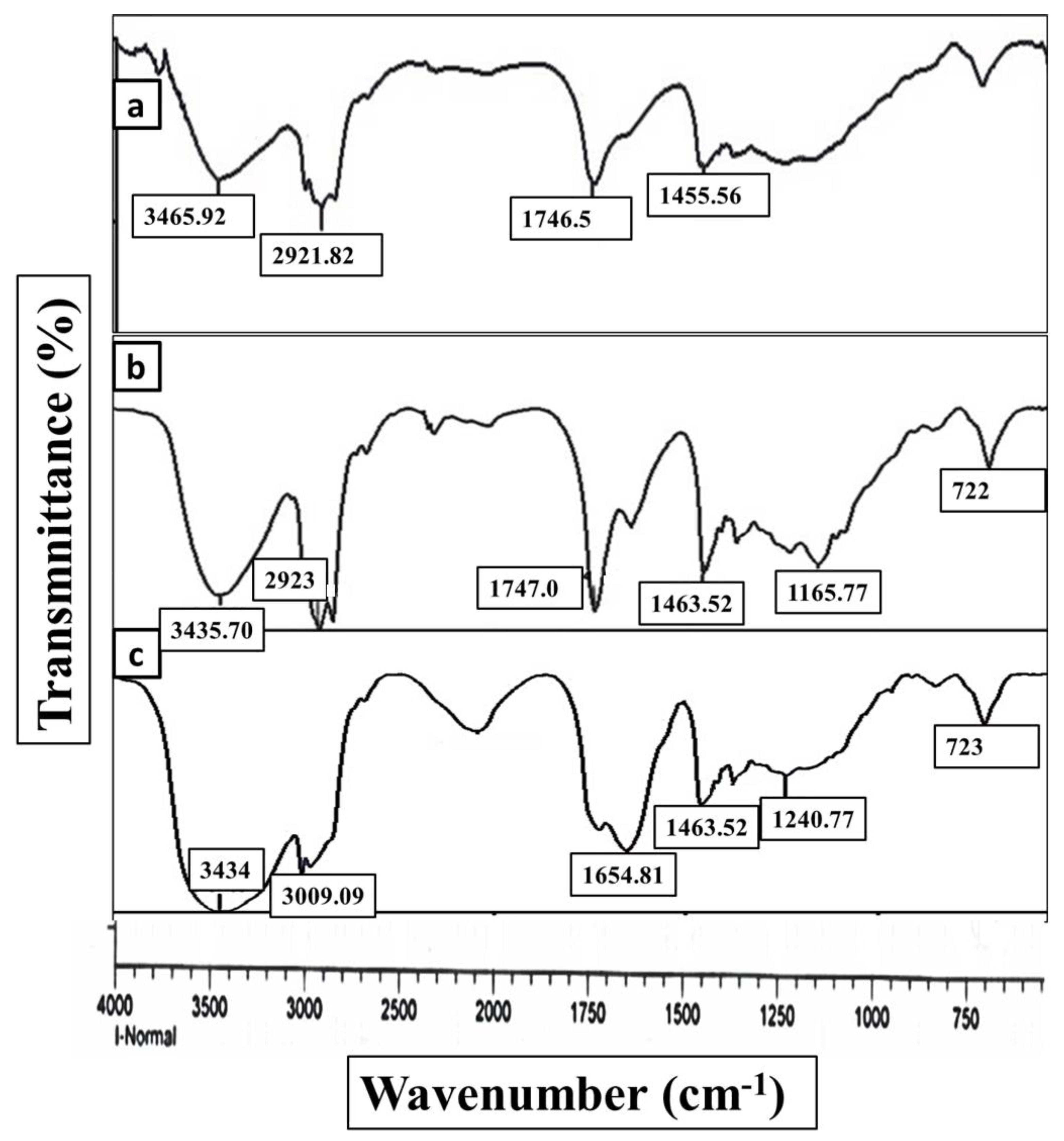
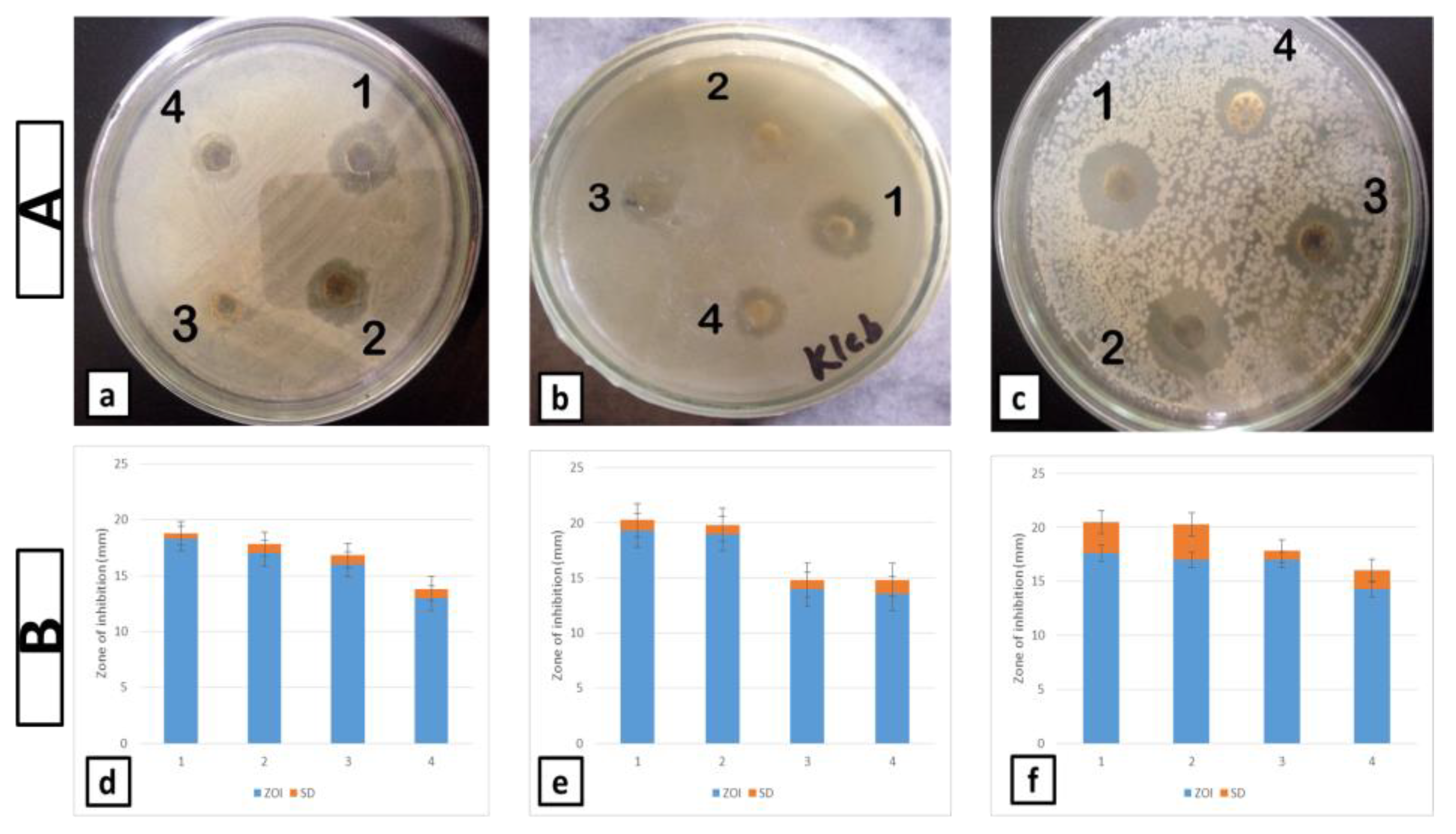
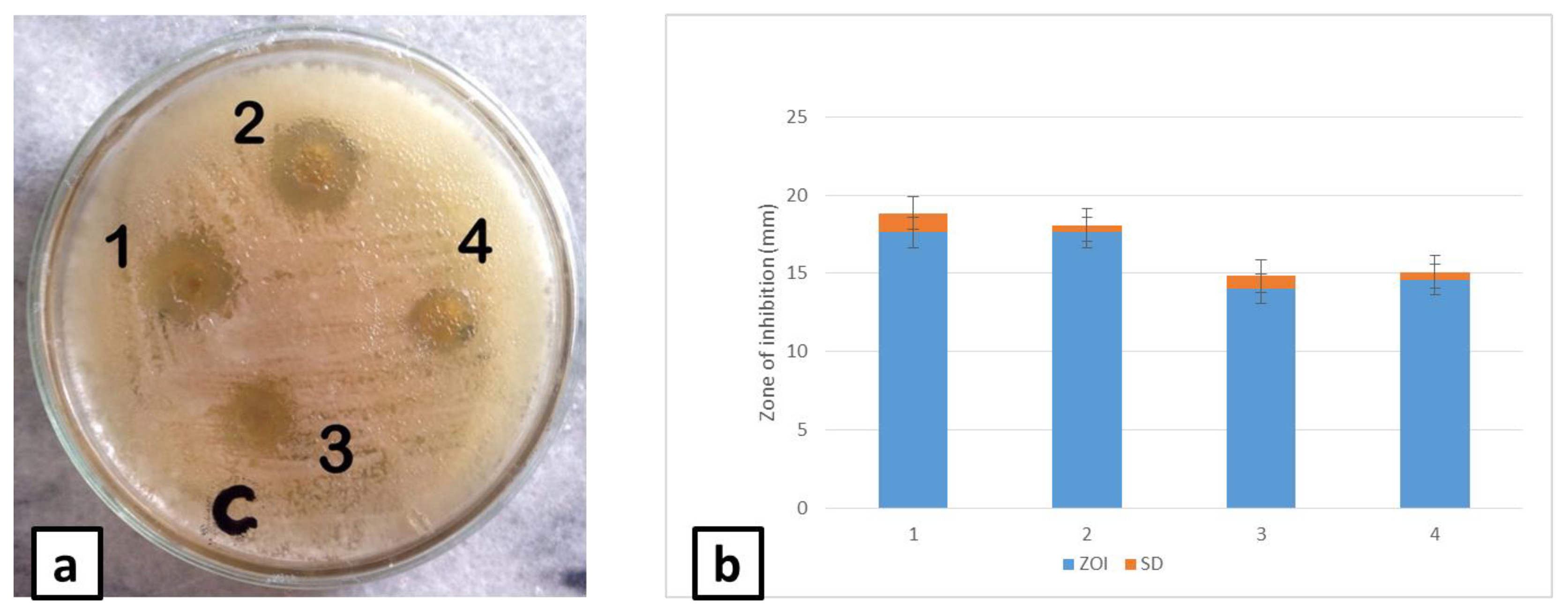
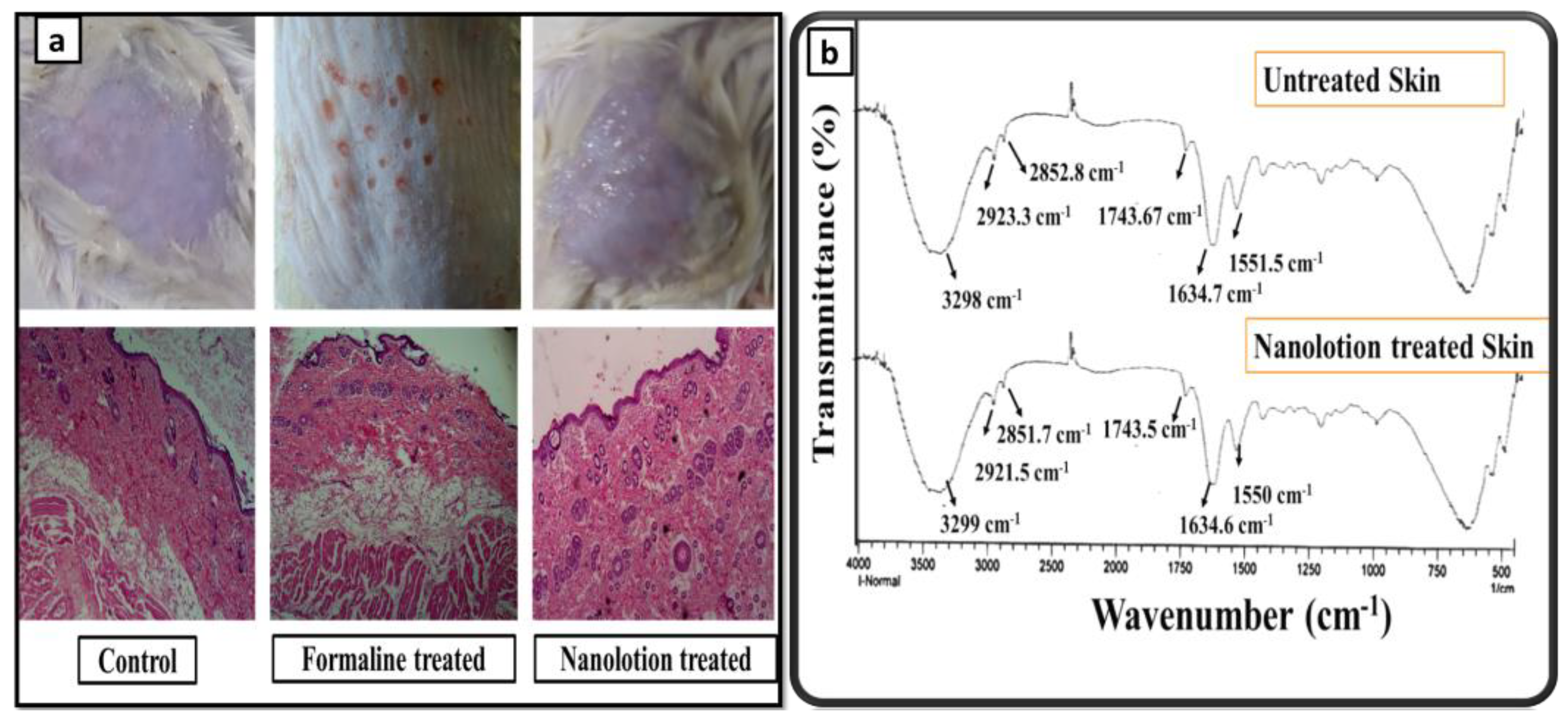
| Polymers/Surfactants | Concentrations | Response |
|---|---|---|
| Methocel (mg) | 25 | Sedimentation/phase separation |
| 50 | Sedimentation/phase separation | |
| CAP (mg) | 25 | Insolubility in ammonia solution |
| 50 | Insolubility in ammonia solution | |
| HPMCP (mg) | 25 | Stable emulsion |
| 50 | Stable emulsion with larger particles | |
| Tween80/span-80 (mL) Methocel (mg) | 1 | Phase separation upon ultrasonication |
| 25 | Sedimentation/phase separation | |
| Triton X100/span-80 (mL) | 1 | Phase separation upon ultrasonication |
| 2 | Phase separation upon ultrasonication | |
| TritonX100 (mL) | 1 | Unstable formulation |
| 2 | Unstable formulation | |
| Tween-80 (mL) | 1 | Unstable formulation |
| 2 | Unstable formulation | |
| Span-80 (mL) | 1 | Stable formulation (use less quantity) |
| 2 | Stable formulation |
| Process Parameters | Time | Response | |
|---|---|---|---|
| Particle Size (nm) | EE (%) | ||
| Ultrasonication time | 5 | 400 | 74 |
| 10 | 307 | 78 | |
| 15 | 203 | 80.97 | |
| 20 | 210 | 75.5 | |
| Stirring rate (rpm) | 10 | 240 | |
| 20 | 203 | ||
| Stirring time (min) | 1 | 203 | |
| 2 | 215 | ||
| Functional Groups | Blank Nanoemulsions | SSD Loaded Nanoemulsion |
|---|---|---|
| N-H stretch | 3465.92 | 3435.70 |
| C-H stretch | 2921.82 | 2923.95 |
| C=O stretch | 1746.58 | 1747.00 |
| S=O | - | 1165.77 |
| Fingerprint region | 1455.56 | 1463.52 |
| Time (h) | Control | Formalin (0.8%) | SSD-Loaded Nanolotion | |||
|---|---|---|---|---|---|---|
| Erythema | Edema | Erythema | Edema | Erythema | Edema | |
| 0 | 0 | 0 | 0 | 0 | 0 | 0 |
| 6 | 0 | 0 | 2 | 3 | 0 | 1 |
| 24 | 0 | 0 | 4 | 3 | 0 | 1 |
| Mean ± SD | 0 ± 0 | 0 ± 0 | 2 ± 2 | 2 ± 1.7 | 0 ± 0 | 0.66 ± 0.5 |
| PII | 0 | 4 | 0.66 | |||
| Temperature (±2 °C) | Physical Appearance | Mean Particle Size | ||||
|---|---|---|---|---|---|---|
| 1 Month | 3 Month | 6 Month | 1 Month | 3 Month | 6 Month | |
| 4 | Physically stable | Physically stable | Physically stable | 213 nm | 215 nm | 218 nm |
| 40 | Physically stable | Physically stable | Physically stable, slight phase separation | 213 nm | 217 nm | 225 nm |
Publisher’s Note: MDPI stays neutral with regard to jurisdictional claims in published maps and institutional affiliations. |
© 2022 by the authors. Licensee MDPI, Basel, Switzerland. This article is an open access article distributed under the terms and conditions of the Creative Commons Attribution (CC BY) license (https://creativecommons.org/licenses/by/4.0/).
Share and Cite
Fatima, Q.-u.a.; Ahmed, N.; Siddiqui, B.; Rehman, A.u.; Haq, I.u.; Khan, G.M.; Elaissari, A. Enhanced Antimicrobial Activity of Silver Sulfadiazine Cosmetotherapeutic Nanolotion for Burn Infections. Cosmetics 2022, 9, 93. https://doi.org/10.3390/cosmetics9050093
Fatima Q-ua, Ahmed N, Siddiqui B, Rehman Au, Haq Iu, Khan GM, Elaissari A. Enhanced Antimicrobial Activity of Silver Sulfadiazine Cosmetotherapeutic Nanolotion for Burn Infections. Cosmetics. 2022; 9(5):93. https://doi.org/10.3390/cosmetics9050093
Chicago/Turabian StyleFatima, Qurat-ul ain, Naveed Ahmed, Bazla Siddiqui, Asim ur Rehman, Ihsan ul Haq, Gul Majid Khan, and Abdelhamid Elaissari. 2022. "Enhanced Antimicrobial Activity of Silver Sulfadiazine Cosmetotherapeutic Nanolotion for Burn Infections" Cosmetics 9, no. 5: 93. https://doi.org/10.3390/cosmetics9050093
APA StyleFatima, Q.-u. a., Ahmed, N., Siddiqui, B., Rehman, A. u., Haq, I. u., Khan, G. M., & Elaissari, A. (2022). Enhanced Antimicrobial Activity of Silver Sulfadiazine Cosmetotherapeutic Nanolotion for Burn Infections. Cosmetics, 9(5), 93. https://doi.org/10.3390/cosmetics9050093









